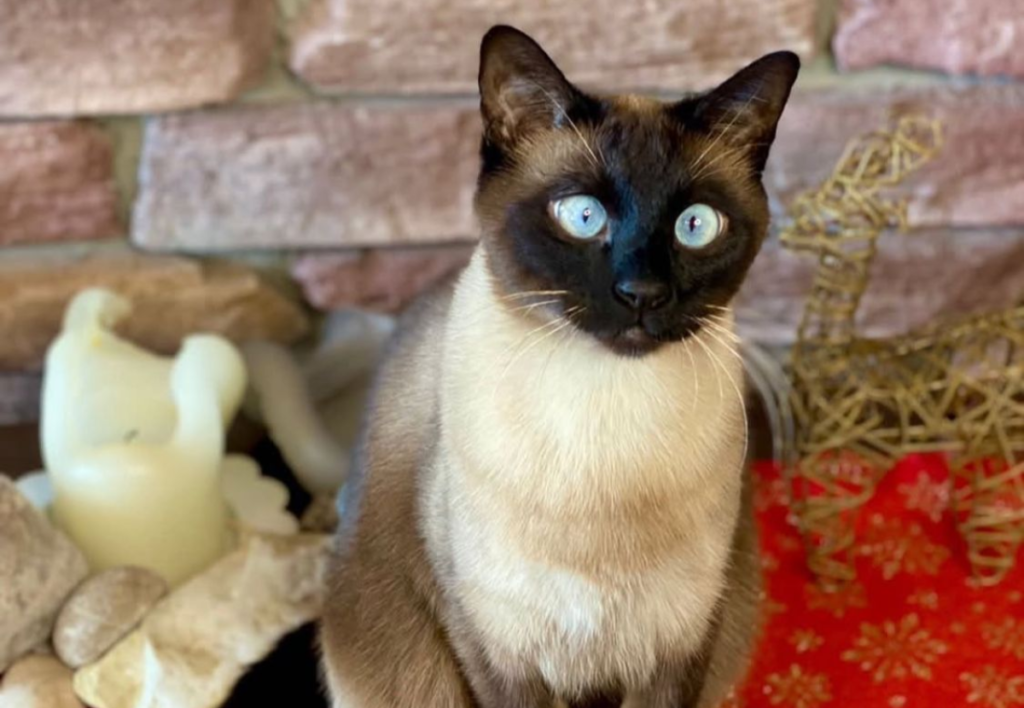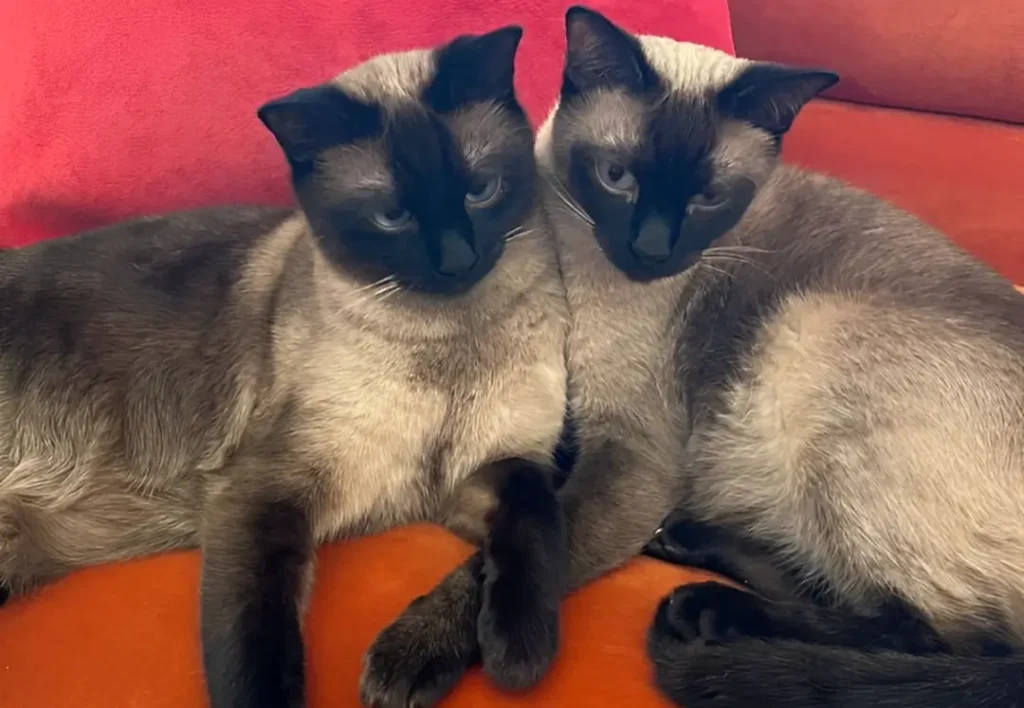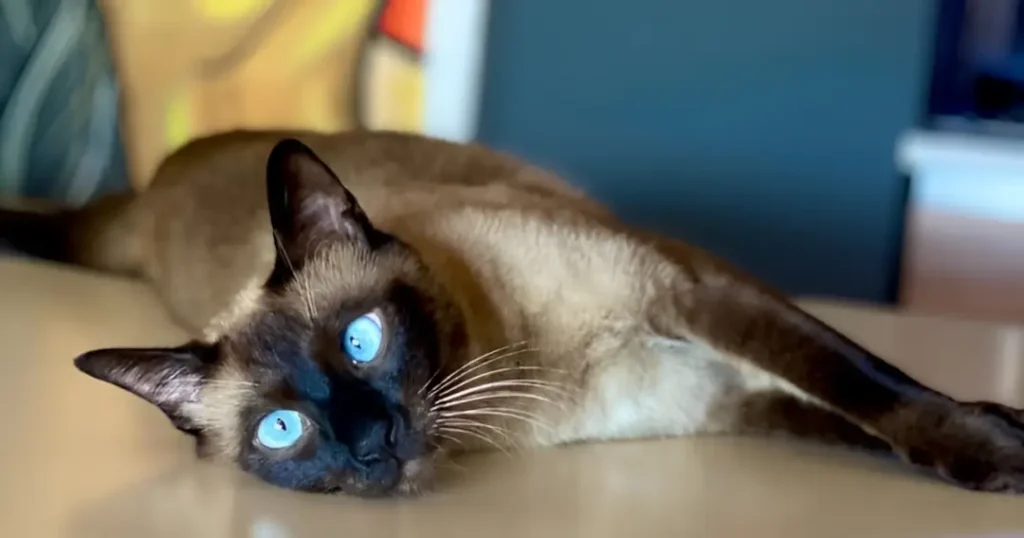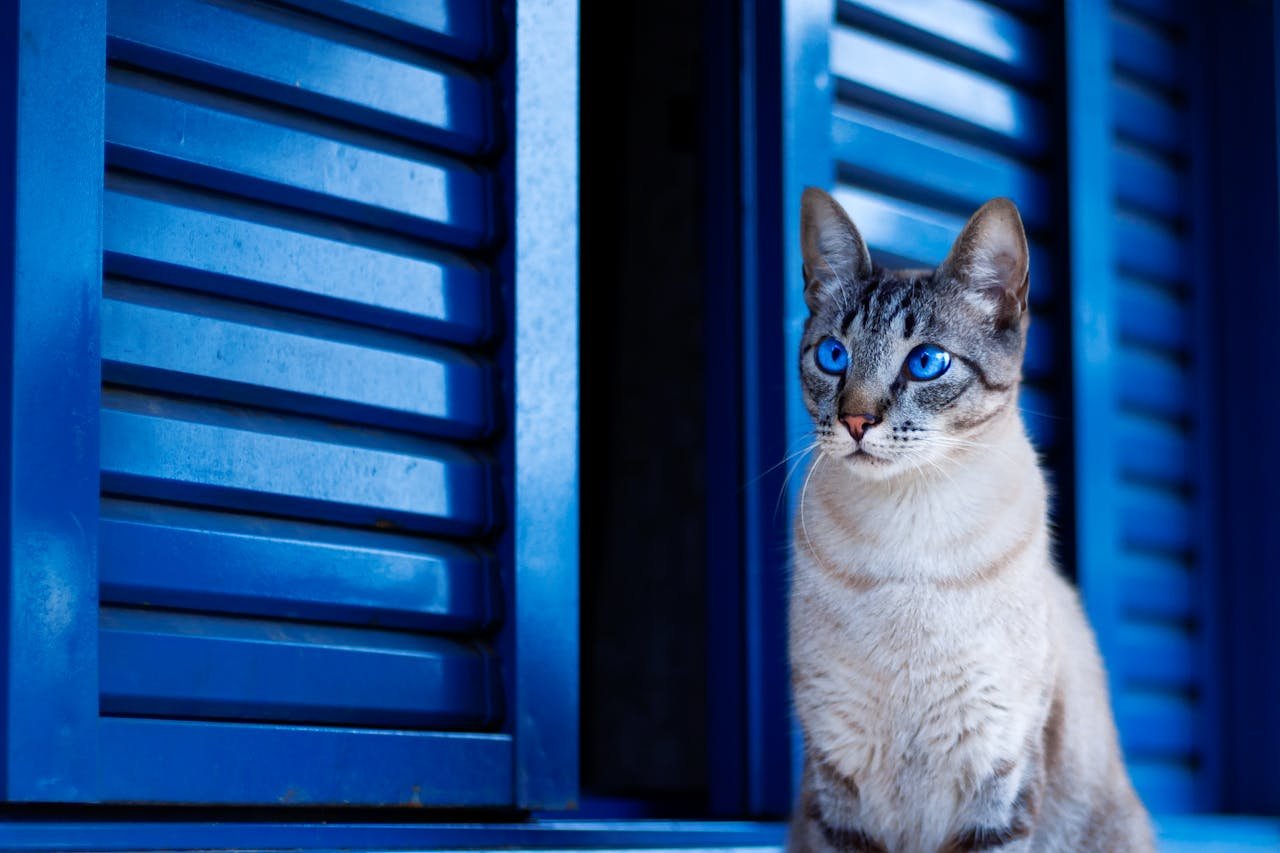Fascinating Facts About the Black Siamese Cat You Need to Know
The Siamese is one of the most famed and instantly recognizable cats in the world, celebrated for its elegant body shape, large ears, and charismatic personalities. But what many people don’t realize is that the so-called black Siamese cat does, in fact, exist—and it’s often referred to as a Seal Point Siamese. I remember the first time I saw one—its pale cream coat shimmered under the sun, with darker marks on the faces, paws, and tails that gave it a stunning contrast. These pointed features aren’t just beautiful—they’re a result of genetics. Thanks to a genetic mutation, their hair only darkens in cooler parts of the body, leaving the core of the bodies lighter.
When I first met a solid black Siamese, it felt like watching a shadow glide across the floor—slinky, elegant, and deeply beautiful. While Siamese cats are often known for their blue-eyed, light-coloured grace, the black variation brings a rare, yet recognisable twist to the breed. These kitties might not carry the traditional seal point or cream body, but they still show off the Himalayan gene in a subtle way, sometimes seen in how their coat changes tone in sunny patches—a gentle lightening of the blackness, or even a soft browning around their paws or face.

This unique colouration isn’t just about style; it tells a genetic story. Though they may appear solid black, many of these cats still carry the heat-sensitive trait from the Himalayan gene, which causes darker points on cooler extremities—like the tail, legs, or face—especially as they grow older. Some retain the blue eyes, while others shift to green, especially in Orientals, a closely related branch. You might even recall the iconic Lady and the Tramp Disney cats with their cheeky, chatty attitude—that classic chattiness remains in these black Siamese too, making them a perfect match for true cat lovers who admire both personality and colour.
From a genetic standpoint, this breed is quite fascinating. Black Siamese cats are born completely white and start to develop color points about a week after birth. These special markings—whether seal, chocolate, blue, or lilac—are influenced by pigments that respond to body temperature. Even though these cats may look like they have black coats, it’s actually just their coloration pattern playing tricks on the eyes. It’s this blend of coat science and visual illusion that makes them truly unique in the cat world.
1. Features of the Black Siamese Cat
The Black Siamese cat has a slim body with a strong body, just like other Siamese cats. Its smooth fur is shiny, soft, and gives a silky look. Unlike traditional Siamese cats, the dark fur of the Black Siamese is completely black, without any markings or lighter areas. One of its standout features is its bright blue eyes, which create a stunning contrast against the deep black coat. These cats are not only beautiful but also very friendly, loving, and social, forming strong connections with their owners. They enjoy playing games, are smart, and can even learn tricks. Their vocal nature makes them one of the most expressive and communicative cat breeds.
In terms of health, Black Siamese cats usually live between 12 to 15 years, and with proper care, some can reach their late teens or even their twenties. They may face some health issues, such as dental problems, breathing difficulties, or heart disease, so it’s important to schedule regular vet visits. Providing them with a nutritious diet and an engaging environment will help keep them healthy and active. Their long life span and the ability to form deep bonds with their families make them wonderful pets for any cat lover.
2. The Meaning of the Black Siamese Cat in Culture
In different cultures, black cats have different meanings. Some see them as symbols of bad luck, while others believe they bring protection and good fortune. The black Siamese cat, with its elegant look, represents both these ideas. In Thailand, Siamese cats were considered sacred and were thought to bring wealth and safety to their owners. The elegant appearance of these cats continues to hold cultural significance and admiration.
The black Siamese cats has also been featured in many forms of art and popular culture. Its smooth and elegant look has inspired paintings, sculptures, and even books and movies. In these works, black Siamese cat are often depicted as mysterious, smart, and even magical creatures. Their beauty and unique personality continue to fascinate people all over the world, ensuring their place in the hearts of many.
3. How Temperature Shapes Their Unique Appearance

What makes a black Siamese look the way it does is deeply tied to something called the Himalayan gene. This gene, which is responsible for the pointed coat, is heat sensitive and causes partial albinism. I’ve seen it firsthand in the kittens I’ve raised—every one of them born completely white because in their mother’s wombs, the temperature is constantly warm. Once a kitten is exposed to the outside world, its bodies start to develop color only in the extremities, where the temperatures are lower. The hair on the torso, chest, and stomach stays paler because the core of the cat’s body is too warm for pigment synthesis to occur.
The science behind it is fascinating. It’s not impossible to tell what color the points will be, but you usually have to wait until the kittens are a bit older. The Himalayan gene is also recessive,
which means Siamese cats have to inherit two copies—one from each of their parents—to show these features. This is what gives every black Siamese cat that striking contrast, making each one a little mystery that unfolds with time.
The Mystery Behind the Black Siamese
The black Siamese cat is a rare and beautiful variation of the classic Siamese breed. While most Siamese cats are known for their light-coloured bodies with blue eyes, the black Siamese carries the same elegance but with a solid black coat. This unique colouration is influenced by the Himalayan gene, which is responsible for their colour points. Unlike other Siamese cats, the Himalayan gene causes them to have darker points on their tail, legs, and face, but they often develop lighter shades in warmer areas of the body. As the cat grows older, these changes in colour become more noticeable, with darker shades developing on the cooler extremities, adding a touch of darker colouration and a shifting tone to their coat.
This fascinating colour change is also linked to partial albinism and temperature-sensitive traits, which cause the black Siamese to show darker points in colder areas of the body. In fact, Siamese cats are born completely white, with the colouration gradually developing over time as they are exposed to varying temperatures. The blue eyes that many Siamese are known for may eventually shift to green eyes, especially in Orientals, which are closely related to the breed. Whether they are chatty and cheeky, or as poised and graceful as a Disney character like Lady and the Tramp, these cats are a beloved choice for cat lovers who appreciate both their playful personalities and stunning colour patterns.
Inheriting the Himalayan Gene
The Himalayan gene plays a crucial role in the development of color points in Siamese cats. For a kitten to inherit these color points, both the mother and the father must carry the Himalayan gene. If both parents are carriers, the kitten has a higher probability of having colored points on its body, and this will often include blue eyes. However, if only one parent carries the gene, the kitten may still inherit the Himalayan gene, but it won’t necessarily have color points. The inheritance of the gene can be variable, meaning that even if the kitten doesn’t show the characteristic color points, it may still be a carrier of the gene and can pass it on to future offspring.
The inheritance pattern of the Himalayan gene also affects the eye color of the kitten. If the kitten inherits the Himalayan gene, it is likely to have blue eyes, but in some cases, the eye color may differ from blue. The probability of these traits appearing depends heavily on the genetic makeup of the parents and their gene carriers. This makes the process of color points and eye color in Siamese cats a fascinating example of genetic inheritance and how traits can be passed down through generations, often with some variation.
4. Seal-Point Siamese — Black or Not?
Technically, from a genetic point of view, Seal-Point Siamese cats are black, but visually they don’t always resemble the typical classic black cat. This happens because the Himalayan gene affects the color of the fur on their bodies. Without the presence of this gene, a Seal-Point Siamese would indeed be black, but it’s this gene that actually makes them a Siamese cat. As temperatures drop, the fur can become a little darker, but the black color doesn’t fully develop in the way you’d expect. It’s a unique characteristic that sets the Seal-Point Siamese apart.
Do Black Siamese Cats Really Exist?
When people ask if black Siamese cats exist, it’s important to clarify that Siamese cats cannot be entirely black due to the presence of the Himalayan gene. This gene prevents them from having a pure black fur coat. The Himalayan gene leads to colour points on their tail, legs, and face, which means they won’t have the black body of a true black cat. If you’re looking for a black-colored cat, you’re more likely to be looking at an oriental cat. While oriental cats share many body characteristics with Siamese cats, they do not carry the Himalayan gene, which means they can be entirely black and have green eyes instead of the typical blue-eyed look of a Siamese.
The genetic difference between oriental breeds and Siamese cats is crucial. The oriental cat does not inherit the Himalayan gene, so it doesn’t develop the colour points that are characteristic of a Siamese. This is why you may see a black oriental cat with green eyes and pure black fur, but you won’t find a black Siamese cat with those same features. So, when wondering about a purebred Siamese being black, the answer is no—it’s likely an oriental cat instead.
5. The Science Behind Their Stunning Coats
One of the most fascinating things I’ve learned about Black Siamese cats through years of owning and studying them is how their unique color points come from a very specific gene. These cats are actually carriers of the Himalayan gene, which is a special mutation responsible for the signature markings on their ears, nose, paws, and tails. This gene is temperature-sensitive, meaning that the cooler areas of the body develop darker pigment, while warmer spots stay white or cream. When I got my first black Siamese, I was amazed at how the contrast in color shifted as the cat grew and adapted to its environment.
What’s even more interesting is that Black Siamese cats are actually partially albino, due to an albino gene mutation that works alongside the Himalayan gene. This mutation is recessive, so both parents need to carry it for the traits to show in the kittens. Because of this, all purebred Siamese are born in litters of completely white kittens, and their true coats only begin to change as they grow older and are exposed to different temperatures.
From my own experience, those baby blue eyes you see in all Siamese kittens are not just charming—they’re a telltale sign of the albino background. Over time, as the body develops and parts of it remain cooler, those iconic color points start to appear. It’s incredible to see how something as simple as cold or warm surroundings can determine how the markings evolve. No matter the breed variation—whether it’s a black Siamese or a more traditional one—the role of genes and pigment is always at the core of their beauty.
6. Siamese Cat Colors

The Cat Fanciers Association recognizes several distinct colors for the Siamese breed, including Seal, Blue, Chocolate, and Lilac. Among them, the Seal-Point Siamese is often what people think of when they imagine a black Siamese cat. These cats have bodies that range from a pale cream to a fawn color, with warm tones. Their points, which refer to the darker fur on their faces, paws, and tails, are typically a dark brown, sometimes almost black. The paw pads and nose leather match the color of their points, making the contrast quite striking.
In addition to the Seal-Point, there are other Siamese color variations. For example, the Chocolate-Point Siamese has ivory-colored bodies and points that are a rich milk chocolate color. Their paw pads and nose leather are a soft cinnamon pink. Blue-Point Siamese cats have white bodies with blue undertones, and their points are a deep blue color. The paw pads and nose leather of Blue-Point Siamese are a distinct slate gray. Each color variation of the Siamese cat has its own charm, but the Seal-Point remains a popular choice due to its deeper, almost black appearance.
The Siamese breed comes in a variety of stunning colors. One of the most unique is the Lilac-Point Siamese, which has an icy white body with no shading. Their points are a soft gray with a slight pink tone, and their paw pads and nose leather are a delicate lavender-pink. All Siamese cats, regardless of the color, have striking blue eyes. While Lilac-Point Siamese have a distinct appearance, there are other color variations, such as tabby, ginger, or even parti-color points, accepted by organizations like The International Cat Association.
Despite the variety of colors and points, a pure black Siamese cat doesn’t exist, though there are breeds that come close. The cat’s coat must always be paler on the body with darker colored points, which is why a black Siamese cat can never be fully solid black. However, these cats still have a beautiful range of colors and markings that make them stand out in any crowd.
7. What’s the Closest Breed to a Black Siamese Cat?
While a black Siamese cat doesn’t technically exist, you might find it disappointing to learn that they have pale cream fur on their bodies. However, if you’ve been dreaming of a black cat, there is another great option! The Oriental breed, closely related to the Siamese, shares a similar genetic makeup, but without the Himalayan gene. This means that Oriental cats can have a pure black coat covering their entire body.
These cats, often referred to as ebony, are different from Black Siamese cats not only in color but also in their eyes, which are green rather than the classic Siamese blue. Despite these differences, Oriental cats look and behave very similarly to Black Siamese cats, making them the closest option if you’re looking for that black coat.
8. Black Siamese Mix: A Unique Blend of Elegance and Mystery
As someone who has raised both traditional Siamese and black cats, I’ve always been fascinated by what happens when these two striking breeds come together. Through mating a Siamese with a black Oriental or even a standard black cat, you can get kittens with a truly unique look. Their coat color can be darker, sometimes deep chocolate or even charcoal, depending on the genetic makeup of the parent cats. While the gene for black fur may come from the non-Siamese side, the elegant frame and vocal nature often stay true to their Siamese roots. I’ve noticed that not all kittens will inherit the Seal-Point pattern, but many still share similar looks, especially in the eyes and body shape. The chance of getting a dark-coated cat that still resembles a Siamese is much higher when you cross it with an Oriental, as they are closely related breeds. It’s this rare mix of traits—sleek coat, bold color, and exotic looks—that makes these cats stand out. Watching this blend of beauty and mystery grow from tiny kittens into graceful adults is one of the most rewarding parts of my experience with them.
9. What a Black Siamese Cat Really Looks Like
When people hear Black Siamese, they often imagine a cat with a completely black coat, but that’s not exactly the case. These cats have a unique look that’s shaped by their genes and pigmentation. Most are actually born white due to the albino gene variant that Black Siamese cats carry. Over time, their color points begin to appear—usually around a week after birth. These markings tend to darken as the kitten grows through its first year of life, especially if the body is exposed to colder temperatures.
From my own experience with a Seal Point Siamese, I noticed the rich brown and almost black shades developing slowly around the ears, paws, and tail. Some coats become darker with age, and the internal temperature of the body plays a big role in how the color changes. While these cats don’t have a fully solid black appearance, their points can be so dark that they closely resemble an all-black cat, especially in their older years.
Interestingly, even though you might find a cat that seems completely black, true all-black cats are actually rare due to genetics. Many have subtle patches of different colors in their hair, or even whiskers that don’t quite match. And one thing I always look for—if the paw pads are completely black and matching, the cat might be closer to a pure black coat, but most Black Siamese will have pink tones mixed in with their markings.
10. Caring for a Black Siamese Cat
Taking care of a black Siamese cat involves maintaining a balanced diet to ensure they stay healthy and active. A good starting point is providing high-quality food that’s rich in protein, vitamins, and minerals to keep them energized and support their overall health. Wet food is a great choice, as it aids with hydration, while dry kibble can help promote dental health. Remember, portion control is key to preventing obesity, a common issue in indoor cats. Ensure you’re feeding your cat the right amounts and keeping an eye on their weight for optimal health.
The black Siamese cat has a short coat, which makes grooming relatively simple. Regular brushing will help remove loose hair and keep their fur shiny. This grooming session also provides an opportunity to check for any potential skin problems or pests. Regular dental care, nail trimming, and ear cleaning are essential to maintaining your cat’s overall well-being and ensuring they stay healthy. This approach to care, combined with a proper diet, will help your black Siamese cat live a happy and vibrant life.
11. Keeping Your Black Siamese Cat Happy
Black Siamese cats are incredibly smart and need a variety of activities to stay engaged. If they aren’t mentally stimulated, they can quickly get bored and may become destructive. Providing a range of toys, including puzzle feeders and brain-challenging games, will help keep their minds active. They love to climb, so a few climbing trees or interactive playtimes can really keep them engaged. Regular play with interactive games can help them stay happy and avoid any frustration.
These cats also need plenty of attention and do best in homes where they receive lots of interaction. They generally get along well with pets and children if they’re introduced properly. However, black Siamese cats don’t like to be left alone for long periods. Be sure they have enough company and activities to keep them happy and prevent loneliness.
Conclusion
The black Siamese cat is a rare and captivating version of the beloved Siamese breed. Known for their beautiful black coat, bright blue eyes, and loving nature, these cats continue to charm cat lovers around the world. Though not purely black like some other cats, their elegance and unique traits make them stand out. Whether a Seal-Point Siamese cat or a cat with lighter shades due to the Himalayan gene, these cats are a joy to own. With the right care, they will remain healthy and happy for years to come.
For More Visits: Siamesemania

